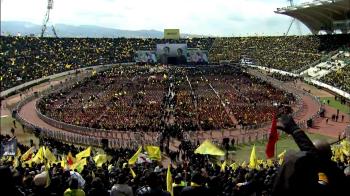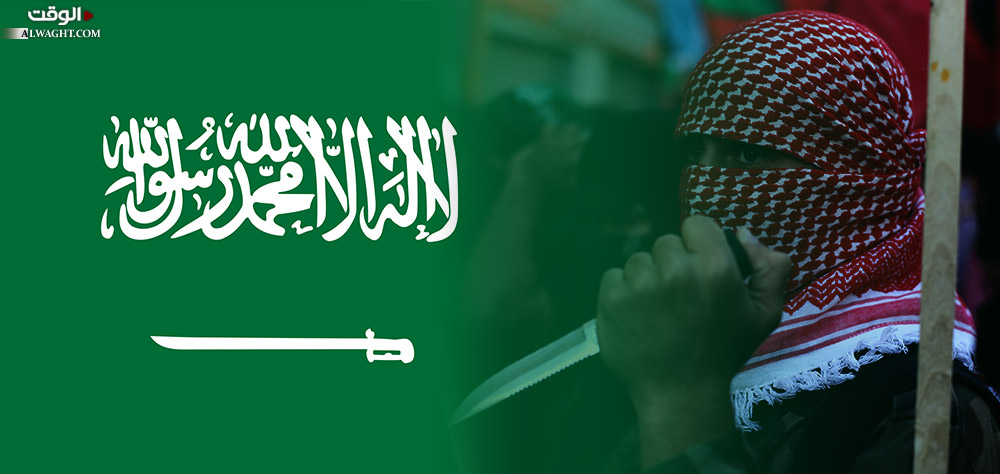Alwaght- The current developments and conditions associated with Saudi Arabia including the war against Yemen, creep of radical ideology among the young Saudi generations, economic difficulties, and internal rifts are indicating that the Arab kingdom is moving towards even harder and more gloomy days.
Latest insider news revealed about secret efforts to assassinate the Crown Prince Mohammed bin Salman that could unleash wave of instability in the Arab world’s largest oil producer beside other complicated matters suggest that Saudi Arabia is possibly expecting one of its most difficult and unstable periods in past 50 years.
Has the kingdom begun showing signs of movement towards being a state deeply fragmented? A focus on a pack of factors reveals that the political, economic, and even ideological gaps in the oil-rich Arab monarchy are severely widening as the time goes by.
Economic gaps widen as unemployment rates surge
As the kingdom is hosting the Muslim pilgrims from across the world arriving for Hajj, the educated Saudi youths have launched a protest campaign online to demonstrate against rising rates of unemployment in the world’s biggest crude oil exporter. The London-based Arab-language Rai al-Youm newspaper reported that many Saudis, majorly the university graduates, are in a state of bafflement and frustration as they suffer hard economic times due to daily-increasing joblessness in the wealthy monarchy.
Many young web activists of Saudi Arabia argue that the government’s plan to cut the unemployment rate by 7 percent has failed as the economic statistics show no signs that during the past two years the number of the unemployed people dropped. According to the figures published by Saudi Arabia’s General Authority for Statistics, the country's unemployment rate rose to 12.7 percent in the first quarter of 2017, continuing its steady climb as the economy grapples with the fallout of low oil prices. The nation’s data authority further noted that half of the job seekers are the university graduates.
But this gloom of the economy does not mean that all of the Saudi nationals are meeting their critical economic conditions. In fact, the online campaign of protests against unemployment is only run by a big number of the ordinary citizens who are not linked to the royal family.
News reports now maintain that rich princes and commons are struggling to withdraw their wealth from the national banks in a bid to smuggle it into other countries. This has been troublesome to the financial and banking system, pushing King Salman of Saudi Arabia to order restrictions on cash outflow. The plan was designed to curb big cash withdrawals from the Saudi banks for foreign destinations. The large sums of money withdrawing by the princes while the population of the unemployed is enlarging day by day lays bare the fact that the wealth chasm is widening inside the absolutely-ruled Arab kingdom.
This provides evidence for the fact that only the ordinary Saudis are bearing the brunt of economic hardship amid increasing expenses of the war against the neighboring Yemen and the troubles given to the oil-dependent economy due to the low oil prices. On the other side, the rich princes are safely escaping abroad with their money to avoid economic damage.
Young generation’s inclination for radicalism
Today Saudi Arabia is grappling with a social challenge as dangerous as the young people’s tendency to ideological fundamentalism. This is the biggest threat to the young Saudis, mainly blamed on the rulers' wrong policy of supporting an array of extremist Islamists from across the Muslim world. Now the world is familiar with the truth that fundamentalist militants such as al-Qaeda— not to mention others like al-Nusra Front and ISIS that are fighting in Syria and Iraq motivated by jihad fatwas issued by mainly Saudi Wahhabi preachers— are fully bankrolled by Saudi fundraisers.
It is so natural for the young generation to see itself exposed and inclined to fundamentalism due to the radical state doctrine majorly promoted by the government-funded religious centers run by the Wahhabi circles.
But these waves of young fundamentalism are not thriving equally in each and every part of the kingdom. Some regions, like east and west of the country, even reject to allow penetration of Wahhabi-motivated ultraism in their communities.
Poor economic conditions are challenging enough to stand as one of the roots of the youths' leaning towards Wahhabism. The government’s extravagance to spread Wahhabi ideology amid economic difficulties works as a significant dynamic incentivizing the young generation towards the government-desired fundamentalism. Internal pro-Wahhabism campaigns are run beside external ones. India's security authorities say between 2011 and 2013 nearly 25,000 Wahhabi missionaries travelled to India paid by the Saudi government. So the government’s huge investment on Wahhabism propagation, while the nation suffers from economic distress, is a key factor driving the young generation’s inclination for fundamentalism.
Internal power struggles
Exterior view may suggest that the Saudi royal family is a consistent complex but the available facts prove otherwise. The ruling circle is struck with deep internal divisions, with some princes killed in the internal battle for power. There are adequate historical backgrounds for such killings. King Faisal, for instance, was assassinated in 1975 by his half-brother's son Faisal bin Musaid. In mid-August, the BBC published an account of three dissident Saudi royals who went missing in Europe.
“In the last two years, three Saudi princes living in Europe have disappeared. All were critical of the Saudi government - and there is evidence that all were abducted and flown back to Saudi Arabia… where nothing further has been heard from them,” the BBC said of the three.
Additionally, Saudi Arabia still faces the consequences of three-time change of the crown princes by King Salman. King Salman in 2015 and 2017 changed crown princes to eventually allow his son Mohamed bin Salman to stand heir to the throne. The measures continue to pose challenges to the court, amid unofficial reports emerging from there claiming that the last removed crown prince Mohamed bin Nayef is now put under house arrest.
Moreover, the royal circle's discords on foreign policy, including the way of handling of the expensive war on Yemen, remain unsettled. Odds are that home opponents of bin Salman, the young crown prince and defense minister and the real commander of the anti-Yemen military campaign, may rise against him as he presses ahead with his maverick foreign and internal policies.
Rai al-Youm daily suggests that there are emerging signs of instability inside the ruling orbit as some parties rise against King Salman’s efforts to advertize his young and highly naïve son as a next ruler. Past experiences show that high potentials of even more spirited power struggle exist among the ruling elites. Combined with social, economic, and regional crises, any more intense row over rule risks the kingdom’s sliding into a state of chaos.
The major cause of concerns inside the ruling family is the now-certain rise to power of bin Salman, perhaps in near future. His succession will mean breaking with the traditional, decades-long rules of succession according to which brothers take over rule from the king. Brothers and lower layers of power are now feeling their position jeopardized as they observe disrespect for tradition, something bolstering the royal desire to remove bin Salman. In case of happening, his removal can bear long-term instability to the monarchy.



























